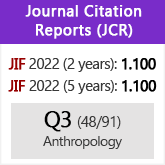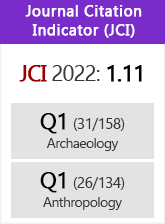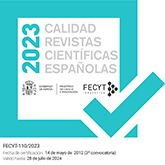Vegetal paleoenvironment in the human settlements found in Payre Cave at the end of the Middle Pleistocene and the beginning of the Upper Pleistocene (Ardeche, Francia)
DOI:
https://doi.org/10.3989/tp.2001.v58.i1.238Keywords:
Palaeoenvironment, Palynology, Middle Palaeolithic, Isotopic stages 7 to 5, Ardèche, FranceAbstract
The Middle Paleolithic site named Payre is located in the south-east of France, in the Middle Rhone Valley, in the Mediterranean world. Since 1990, the excavations have yielded a sequence dated from the isotopic stages 7 to 5. The palynological study based on settlement levels from the isotopic stages 6 and 5 has provided us with information about the vegetal environment of the end of the Middle Pleistocene and the beginning of the Upper Pleistocene. When men came, the landscape was semi-forest and the climate was temperate with Mediterranean influences.
Downloads
Download data is not yet available.
Downloads
Published
2001-06-30
How to Cite
Kalai, C., Moncel, M.-H., & Renault-Mikovsky, J. (2001). Vegetal paleoenvironment in the human settlements found in Payre Cave at the end of the Middle Pleistocene and the beginning of the Upper Pleistocene (Ardeche, Francia). Trabajos De Prehistoria, 58(1), 143–151. https://doi.org/10.3989/tp.2001.v58.i1.238
Issue
Section
Reports
License
Copyright (c) 2001 Consejo Superior de Investigaciones Científicas (CSIC)

This work is licensed under a Creative Commons Attribution 4.0 International License.
© CSIC. Manuscripts published in both the printed and online versions of this Journal are the property of Consejo Superior de Investigaciones Científicas, and quoting this source is a requirement for any partial or full reproduction.All contents of this electronic edition, except where otherwise noted, are distributed under a “Creative Commons Attribution 4.0 International” (CC BY 4.0) License. You may read here the basic information and the legal text of the license. The indication of the CC BY 4.0 License must be expressly stated in this way when necessary.
Self-archiving in repositories, personal webpages or similar, of any version other than the published by the Editor, is not allowed.
















